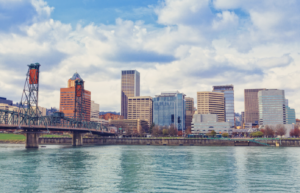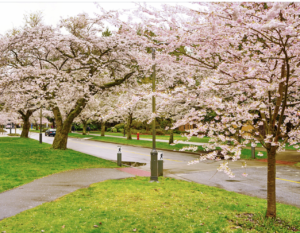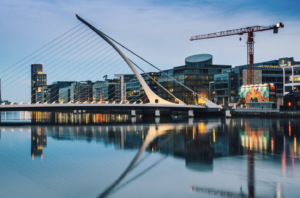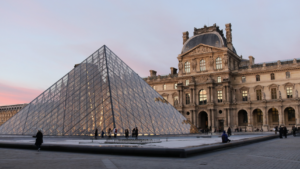Anúncios
With almost 25% of Ireland’s total population residing there, Dublin is both the biggest city and capital of the Republic of Ireland. Most tourists will first lay eyes on Dublin since that is where the country’s primary international airport is located.
Dublin is the most authentic “city” in Ireland, with a plethora of museums and attractions, as well as an abundance of dining options, bars, and clubs. Also, being a university town, Dublin exudes an exciting, youthful energy.
My most recent trip to Dublin was sponsored by Globus Journeys. Their new Green with Envy: Ireland By Design tour was a blast, and I went on it with Choice Touring. Dublin has been on my travel itinerary five times in the last fifteen years.
Anúncios
Dublin Tour Dates
When is Dublin at its most picturesque? This European capital is great at any time of year, in my opinion! The summer months of July and August provide the nicest weather, but they are also the busiest and most expensive.
If you’re looking for a European vacation with good weather and less tourists, try April/May or September/October. Being a university town, Dublin is naturally quite busy all year round and may be rather cold and rainy at any time of year!
Anúncios
The perfect plan for Dublin
Does a whole three days in Dublin quite seem necessary? With careful planning, I believe you can see the key attractions of Dublin in only two days, but a full three days will allow you to see the city to its fullest, including some very unique experiences.
You are welcome to use this schedule as a template for your own Dublin vacation.
Dublin Day One
You will see the Guinness Storehouse, a church, Temple Bar, and other well-known Dublin attractions today.
The Guinness Storehouse in the morning
It would be wise to begin your Dublin vacation with the Guinness Storehouse, the city’s most famous landmark.
– Taking a Tour of the Munster Storehouse
The Guinness Storehouse is far better described as a distillery. It’s an immersive experience for guests, with seven levels to discover. On the bottom level, you may learn about the brewing process and Guinness’s history (including the famous 9,000-year lease signed by Arthur Guinness in 1759), while on the top level, you can find information on history of advertising and how to taste Guinness correctly.
A ticket to the Gravity Bar, located on the seventh level of the Guinness Storehouse and offering 360 degrees of Dublin vistas, is included with every admission to the Guinness Storehouse. (And no, an Irish pint of “the black stuff” is never too early!)
I suggest beginning your day in the Gravity Bar rather than the Guinness Storehouse, both because of its location in St. James’s Gate and the fact that it may become rather crowded towards the end of the day.
The self-guided tour here will take around two hours of your time, and you may purchase your ticket here. (Although the Gravity Bar does have an 18+ policy, the tour is still a good option for families.)
Next, have lunch at one of the Guinness Storehouse’s eateries or explore the surrounding Liberties district, where Thomas St. and Meath St. are lined with several eateries.
Afterwards, pay a visit to a cathedral.
Getting to either of Dublin’s cathedrals from The Liberties is a breeze on foot. Yes, you heard it correctly: Dublin is home to not one but two cathedrals!
Christ Church is the elder of the two mediaeval cathedrals. Its neo-Gothic nave, mediaeval crypt, and replica of the Magna Carta have brought fame to this Viking king-founded cathedral, which dates back to 1030. In addition to Christ Church, there is a connection to Dublinia, a historical museum that has displays on Viking Dublin, medieval Dublin, and the archaeologists who dug up Dublin’s treasures.
Legend has it that St. Patrick baptized people into Christianity from a nearby well when he first erected St. Patrick’s Cathedral in 1191. Not only is it the burial site of novelist Johnathan Swift, but it is also the biggest and tallest church in Ireland. The stained glass windows give it its distinctive look.
The Dublin Cathedral of St. Patrick
You may visit either cathedral for a tour or to attend a religious service. You should generally give yourself at least an hour to see either Christ Church or St. Patrick’s Cathedral, and you may reserve tickets in advance.
Dublin Castle in the late afternoon
Dublin Castle, near Christ Church Cathedral, is another potential stop on your itinerary.
The construction of Dublin Castle as a stronghold began in 1204 when King John of England gave the authority. Up until 1922, it served as the seat of British administration in Ireland. It has subsequently undergone modifications, being reconstructed as a Georgian palace after a fire in the late 1600s.
-Castle
These days, most people visit the castle only to see it. The Gothic Chapel Royal and the ancient state apartments are open to the public, as are the areas where the present castle’s foundations were excavated, revealing Viking artifacts.
Allow up to an hour to see the castle, which is available for both guided and self-directed tours.
Evening: Temple Bar and the River Liffey
At Dublin Castle, you’ll be in close proximity to the world-renowned Temple Bar neighborhood, making it an easy and quick stroll to this vibrant area of the city.
To begin, take a stroll down the Liffey River and stop to admire the famous Ha’penny Bridge. To replace the need for a boat over the river, this elaborate iron footbridge was constructed in 1816. A half-penny was the same fare for both the boat and the bridge. Among Dublin’s most popular picture ops, the bridge is now a modern landmark.
– Near Dublin, on Ha’penny Bridge
Then you should explore Temple Bar’s bar scene. I agree, this is a very touristic place. Sure, you can get a pint just about anywhere else, and some of those locations may even be better. But seeing the iconic red bar in Temple Bar is the top priority for most tourists visiting Dublin for the first time, and that’s just OK!
Many of the area’s ancient pubs, including “the” Temple Bar Pub, which has been there since 1840!, provide live music, delicious cuisine, and drinks like Guinness and Irish coffee. Among those that provide it all, you should definitely check out Oliver St. John Gogarty, The Quays Bar, and The Auld Dubliner.
Also, I also like this area’s The Bank, a classy eatery located in a magnificent old bank building on College Green. (Supper reservations are strongly advised.) A well-known watering hole is always an option.






